my good innerweb pal raptor lewis writes to my Eee-mail (traumador@gmail.com) the following:
_
Yo Traumador! How ya doing?
It's me Raptor. I'm doing some drawings of dinosaurs and I need a little help. I'm doing Jurassic herbivores. I need your help with coming up with a few. I can only come up with Stegosaurus, and sauropods like Brachiosaurus, Diplodocus, Apatosaurus, Mamenchisaurus, etc.
Can you help me think of more? And can you send pictures of them via email? That would be greatly appreciated.
Sorry to bug you.
Your online buddy,
Raptor
P.S.- If you're thinking I'm a dromeosaur, then you are wrong. I'm not even a dinosaur. I'm a paleo-lovin' American human.
now though i'd never claim to be a huge expert (both due my size... get it? pun INTENDED!.. and also my knowledge) on the jurassic period, as we tyrannosaurs are the last of the last of the cretaceous a good 70 million years after the jurassic ended, i will try to take a stab at it and help you out raptor.
so let's take a quick look at the jurassic period with a...
 so the jurassic period.
so the jurassic period.
well to start off with the jurassic is just one of many time periods that geologists and other sciency folks use to better keep track of the huge amount of time this planet has been around. think of it like a month on the calender, only this calender has about 21 months (just for the time life has been around!) and these each have several MILLION YEARS in them compared to the 30ish days each a real month has. scientists label these simply because frankly it makes it easier to get ones head around. i know i can use that help!
the jurassic is the 5th most recent time period (as in going back INTO the past from now, its the 5th you'd go past on your way to the beginning of time... if you started at the beginning and travelled forward to the present the jurassic would be the 18th). the time period before the jurassic was the triassic, and when the jurassic was over it became the cretaceous period.
the jurassic started around 208 million years ago and went on to finish 146 million years ago. meaning it was 62 million years long. nearly the same amount of time dinosaurs have been extinct, but remember this is only one of three time periods the dinosaurs were alive for!
here is what the world looked like towards the END of the jurassic (as in the end closet to our own time, about 150-146 million years ago). the reason this is important is that the way that the earth's land and water were arranged (you'll notice different than it is today, but yet still recognizable) had a HUGE effect on dinosaurs and everything else living back than.
the world's landmasses are always moving around on things called continental plates. through a process called plate tectonics the land (and also ground that makes the bottom of the ocean) are like surf boards cruising the hot liquid ocean of magma inside the earth. as the plates float around they often smash into each other, and than later on split up. this changes the size of not only the land on earth, but the size and shape of the oceans. oceans as it turns out are probably the most important thing effecting living things on earth. whether the living things are right by the water or not!
prior to the time of the dinosaurs in the permian, the time period before the age of dinosaurs (about 60-50 million years before the jurassic) all the continents of the world had smacked into each other and got stuck together for a while. this created the super continent pangaea (it was made "super" by being made up of ALL the worlds possible land masses... sort of the way that super heroes vehicles always become more super when they combine into a mega vehicle!). this was not the first time a super continent has formed on earth, but it was the most important for life on earth.
due to the effects of having less coastline (in other words water touching land) pangea had really mucked up weather systems. having ocean close to you means you get more rain, and rain is key for plants to survive. because pangea had a lot of land WAY away from the ocean, most of it turned to desert. by the end of the permian the worst extinction event in the world's history had occurred, about 95% of life on earth was gone!
the reason i mention this chilling and sad event is that the jurassic marked the final end of pangea and its life killing ways. as of the beginning of the jurassic 208 million years ago pangea started to break apart into what would become the modern continents. of course the continents won't finish properly splitting up till the cretaceous, but their break up started in the jurassic. this drastically changed all sorts of stuff like the climate and environments animals and plants had to deal with. so there was a lot of change in the types of dinosaurs as the time period went on.
despite what many books tell you, parts of the jurassic were actually very similar to the triassic. especially the beginning of the jurassic. the dinosaurs though a bit varied were still of the triassic families. these included prosauropods, coelophysoids, and heterodontosaurids. the only big difference was that many of the large reptiles that had been around in the triassic were no longer present (but not all of them were gone!). at the middle of the jurassic there is growing evidence of a small mass extinction and here we see dinosaur types change as the "triassic" era types disappeared and the first of the more "classic" jurassic families pop up in their places.
 the plant scape was a lot different than we're used to today. during this time gymnosperms plants were the main type. gymnosperms is a fancy word for plants that produce their seeds through cones. their still around today, just now they have company in the form of angiosperms, plants that produce their seeds through flowers. the really successful gymnosperms of the jurassic included conifer and ginkgo trees. ferns were also a very common plant during this time (and again are around today, but not in the same numbers as back than).
the plant scape was a lot different than we're used to today. during this time gymnosperms plants were the main type. gymnosperms is a fancy word for plants that produce their seeds through cones. their still around today, just now they have company in the form of angiosperms, plants that produce their seeds through flowers. the really successful gymnosperms of the jurassic included conifer and ginkgo trees. ferns were also a very common plant during this time (and again are around today, but not in the same numbers as back than). in the skies the reptilian pterosaurs (which again were NOT dinosaurs!) continued to dominant the sky. they diversified a great deal compared to what they were in the triassic. however midway through the jurassic the pterosaurs would have to start sharing the sky with a newcomer. my relative the birds. though the birds wouldn't start edging the pterosaurs out of the clouds till the next time period...

in the oceans similarly the triassic break outs the ichythosaurs would have their golden age, and despite being forced to become smaller than their huge triassic selves, would diversify as well be one of the most successful of the marine reptiles till their demise in the mid cretaceous.
 the most successful of the marine reptiles (other than the sea turtles) the pleiosaur also enjoyed success during the jurassic. like usual they sported their medium to long neck lengths, but towards the end of the jurassic with the evolution of a new short neck version they would spawn some of the earth's most awesome predators ever. the pliosaurs which would enjoy domination of the ocean until the appearance of the mosasaurs halfway through the cretaceous.
the most successful of the marine reptiles (other than the sea turtles) the pleiosaur also enjoyed success during the jurassic. like usual they sported their medium to long neck lengths, but towards the end of the jurassic with the evolution of a new short neck version they would spawn some of the earth's most awesome predators ever. the pliosaurs which would enjoy domination of the ocean until the appearance of the mosasaurs halfway through the cretaceous._
on the land, true mammals appeared for the first time. turtles, lizards, crocodilians, frogs, and salamanders broke out into major success for the first time during the jurassic as well.
_
now of course i could go on and on about the jurassic for ever (well not quite, but with 62 million years worth of substance i can't hope to cover it all here!) i'm going to end now and answer raptor's question.

so again remember raptor the jurassic is a very long period of time, and saw a very large share of dinosaurs evolve and go extinct. the problem with a lot of books out there is they only present the very end of the jurassic, and make it seem like that was all that was going on.
in reality those are only some of the highlights, and frankly (much like the cretaceous) a lot of the stuff that came before is skipped. which hardly seems fair to me.
so plant eating dinosaurs of the early jurassic included (none of which made your list):
 though closely related to the true sauropods on your list, prosauropods were key early jurassic herbivores.
though closely related to the true sauropods on your list, prosauropods were key early jurassic herbivores.
the very primitive ornithischian heterodontosaurs
 the tiny primitive relative of armoured dinsoaurs, scutellosaurus
the tiny primitive relative of armoured dinsoaurs, scutellosaurus the primitive armoured (although NOT clearly an ankylosaur or stegosaur) scelidosaurus. these are my personal favourite early jurassic dinosaur... even if he'd possibly given rise to the dreaded ankylosaurs...
the primitive armoured (although NOT clearly an ankylosaur or stegosaur) scelidosaurus. these are my personal favourite early jurassic dinosaur... even if he'd possibly given rise to the dreaded ankylosaurs...
other common mid to late jurassic herbivores that missed your list include the ever present small hypsilophodonts. not to worry though raptor. almost everyone forgets about these guys!

though they won't amount to much in the jurassic, the iguanodonts appear during this time in forms such as camptosaurus.
though the last additions to your list are of the stegosaur family... stegosaurus did make your list of course... it is important to remember that most of the rest of this family differ greatly from stegosaurus. it is the freak rather than the norm as can be seen by these samples.

so i hope that helps answer your question raptor, and thank you for the eee-mail. it was fun to answer!
to everyone else out there on the web wide world with palaeo question feel free to send them. cause this was fun to answer, and i love getting eee-mails... well actually i like comments on my blog a little more to be honest (i don't check my eee-mail as often as my blog) eee-mails are cool too... traumador@gmail.com is the address.
hope to be answering some of your questions soon!


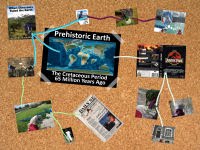
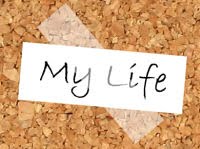

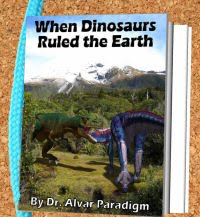


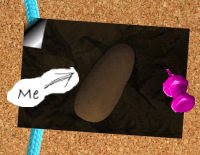
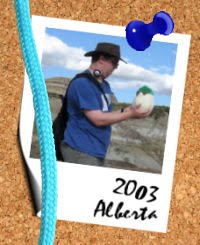




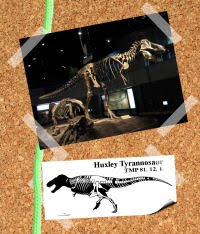








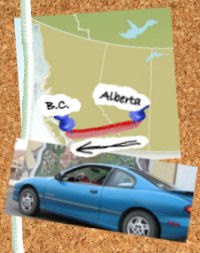






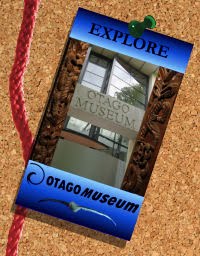


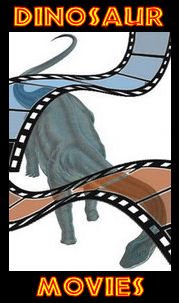






4 comments:
On that worldmap I can see my country, Peru (in the western coast of South America) pretty similar to what it is today, with the exception of that northern big bay of course. In the local Natural History Museum they depict my country as an island by the ... cretaceous period, I think. I don't feel so sure about this thing I mention cause a carnotaur was discovered on that tiny tip of the bay taht you see in yopur map. How could a carnotaur arrive from Argentina to the western tip of northern Gondwana if that was a big island? In my country there is a small city named Bagua that promotes itself as the land/town of a carnotaur.
I've read prosauropods prefered walking on 2 legs, is that true? wouldn't that be better for running?
That scutellosaurus looks cool, I didn't know him.
So, I made many questions this time!
Tnks for answering my question traum. I got log problems but, at least I can comment on your blog.
Excuse me, sorry for the typos. Here's what I meant to say: "thanks for answering my question traum. I got blog problems but, at least I can comment on your blog."
I remade my original blog and it's better this time. check it out: http://paleoquestfossilhunter.blogspot.com/ I'm glad that you're following my blog. Culd you possibly check it out. There's even a survey. In thanks for this post, i did a post for you too.
Post a Comment